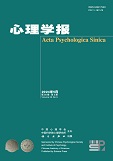Boundary spanning is a form of behavior taken by actors to establish contact with external stakeholders and continuously interact with them to achieve goals and enhance group effectiveness. As the subject of organizational cross-border cooperation, employees are the promoters of the acquisition, integration, and creation of heterogeneous knowledge, and thus employee boundary spanning behavior has received extensive attention from both the theoretical and practical communities. Studies on the effects of employee boundary spanning mainly focus on how boundary spanning behavior influences employee performance, creativity, and role perceptions from an actor-centered perspective. However, employees are not isolated individuals, and their boundary spanning behaviors are closely related to the interests of other individuals in the team or organization, and both these perspectives have ignored the potential interpersonal effects of employee boundary spanning on other stakeholders. Supervisors, who are responsible for assigning critical tasks and making important personnel decisions, are the most important stakeholders of employees in the organization. As such, how do supervisors respond to employees who engage in boundary spanning behaviors is important. Only a few scholars have found that supervisors may perceive employee boundary spanning as a threat to their status and power, resulting in interpersonal undermining towards employees. In the meantime, supervisors may also recognize the effort and competence of boundary spanning employees and reciprocate with positive interpersonal responses. Some studies have found that under certain circumstances, supervisors give higher career evaluations or job rewards to employees for behaviors that are beneficial to the organization but challenge authority (e.g., taking charge or voice), which provides indirect empirical evidence for the above positive views. The question of when and how boundary spanning employees will win supervisor support remains unanswered. To address this issue, drawing on relevant concepts of interpersonal interaction, this study constructs a moderated mediation model to examine how employee upward advice seeking influences supervisors’ cognitive and affective trust and subsequent interpersonal support towards boundary spanning employees.
Hypotheses were tested through a scenario experiment (Study 1) and a multi-wave, supervisor-employee matching field survey (Study 2). For the experimental study, we recruited 220 full-time employees from different companies in China through our alumni network. We adopted a 2 (high employee boundary spanning vs. low employee boundary spanning) × 2 (high upward advice seeking vs. low upward advice seeking) between-subjects design to generate four scenarios, with participants randomly assigned to each of the scenarios. We asked participants to imagine that they were the supervisor in the scenario and to read the materials related to employee boundary spanning and upward advice seeking in order. Next, participants completed measures of cognitive trust, affective trust, supervisor support, manipulation check, and demographics. For the field study, we conducted a three-wave questionnaire survey and collected data from 406 supervisor-employee dyads in knowledge-intensive firms in Hubei, Zhejiang, Shanghai, and Beijing provinces. At Time 1, employees assessed their boundary spanning behaviors and upward advice seeking and provided their demographics. At Time 2 (one month after Time 1), immediate supervisors of employees who completed the Time 1 survey were invited to assess their cognitive and affective trust in their subordinates. At Time 3 (one month after Time 2), immediate supervisors continued to be invited to report the support provided to their employees. We conducted confirmatory factor analysis, regression analysis, and path analysis via SPSS 22 and Mplus 8.0 to analyze the data.
The results of Study 1 (N = 220) indicated that employee boundary spanning and upward advice seeking interacted to affect supervisor cognitive trust and affective trust, which in turn influenced supervisor support. When employee upward advice seeking was high, employee boundary spanning would have a stronger impact on supervisor cognitive and affective trust, which in turn resulted in increased supervisor support. Study 2 (N = 406) again revealed that upward advice seeking positively moderated the direct effect of employee boundary spanning on supervisor affective trust as well as the indirect effect of employee boundary spanning on supervisor support via affective trust. However, it did not support the moderating role of upward advice seeking on the supervisor cognitive trust path, suggesting that in the real workplace, cognitive trust stems from supervisors’ long-standing independent rational judgments of employee competence.
This study makes several theoretical contributions. First, we contribute to the literature on employee boundary spanning behavior by adopting a supervisor-focused perspective and exploring supervisors’ positive attitudes toward boundary spanning employees. Second, we reveal the boundary conditions under which employee boundary spanning can win the supervisor support by selecting employee upward advice seeking as a moderator, which deepens the research on upward influence strategy from the perspective of supervisor- employee dyadic interaction. Third, we enhance the understanding of how the interaction of employee boundary spanning and upward advice seeking increases supervisor support by examining the mediating role of supervisor cognitive and affective trust.




